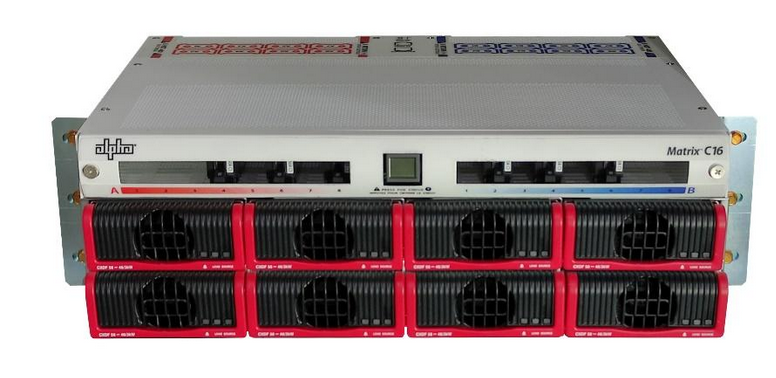
“Increased power demand at the top of the tower presents a problem for MNOs,” Olps said. “New, larger copper cables could be added to deliver the power, but removing old cables and adding new ones costs a lot of money. Additionally, the new cables weigh more and are physically larger, putting additional strain on the tower and increased wind loading. Reinforcing the tower could lead to even more expense.”
To provide more power to the top of the tower using the existing cabling, EnerSys employs the Cordex® CXPS-HSS Hyperboost converter system, which converts the nominal 48VDC site voltage to 58 volts. The elevated voltage reduces the current in the cable, which means the cable can carry more power up the tower. Adding the unidirectional DC-to-DC converter system allows larger loads to be powered without requiring an overhaul of the cabling.
“We needed to find a solution to get more power to the top of the tower that would either utilize the existing power trunk cable at working sites or minimize the size and cost of copper in the case of a greenfield site,” Olps said.
The system is engineered to supply a constant output of 58 volts, regardless of whether 54 volts are coming from the power system or 42 volts are coming from batteries nearing their discharge cut off voltage.
“It is important to maintain the integrity of the circuit to ensure that it always works, regardless of where the incoming power is coming from,” Olps said. “A 58-volt output is as high as we can go to minimize the power loss in the cable and still maintain safety.”
The Differentiator
Hyperboost offers an alternative way to deliver the upconverted voltage. Unidirectional converters are deployed between the power system and the radios which though effective, introduces a single point of failure, according to Olps. With Hyperboost, a bi-directional converter can be placed in series with the batteries.
“Using a bi-directional converter gives us a more reliable system and also allows us to engineer a bit of flexibility on a forward-looking basis to help the MNOs avoid stranding any assets out in the field,” Olps said.
The bi-directional converter will be beneficial to MNOs that are investigating different battery chemistries, like lithium-ion. This can be a challenge because those battery chemistries will have different float voltages, which are the voltages at which a battery is maintained after being fully charged. The converter can be programmed to make sure that the right voltage is available to charge the battery when power is on. When the power is off, the converter ensures that the battery provides the requisite 58 volts.
The Hyperboost system is based on the Cordex® HP -48 to -58 Vdc 3kW Hyperboost module. A single shelf can supply up to 12kW the remote radio unit while leveraging existing power cable infrastructure.
For more information, please contact David Olps at [email protected].
By J. Sharpe Smith, Inside Towers Technology Editor




Reader Interactions